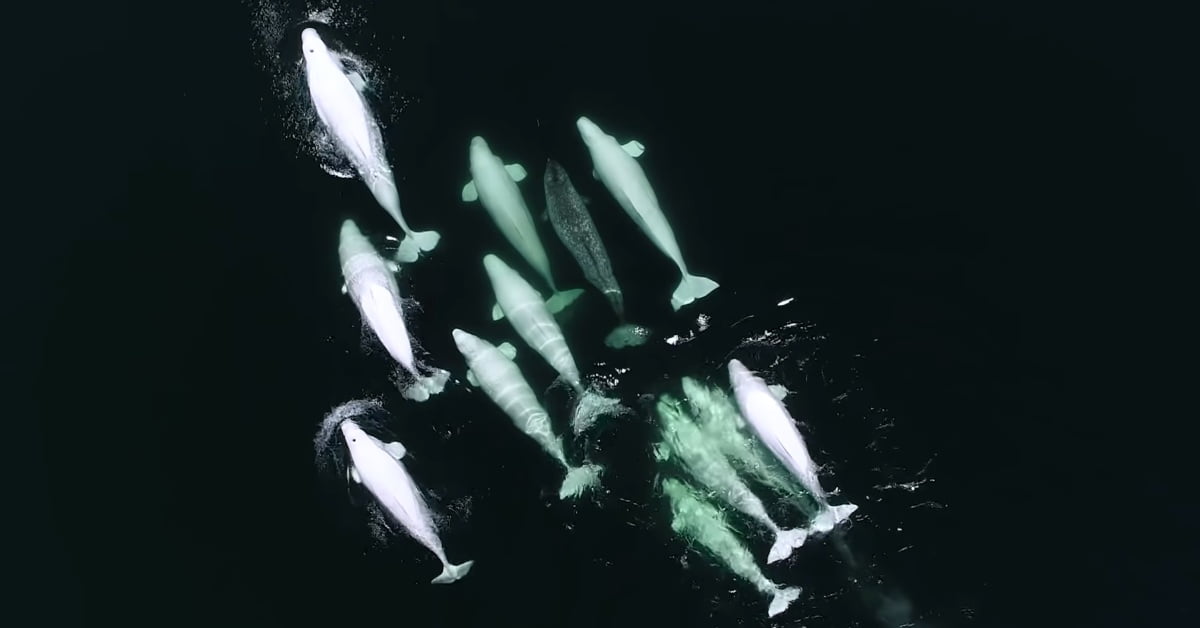Spot the odd one out!

Lost in the sea miles and miles away from home, things weren’t looking good for this young narwhal. Luckily, the wandering youngster is doing just fine thanks to his new buddies, a local gang of beluga whales who actually adopted him.
How do we know? A research team was filming a group of belugas when they discovered a narwhal among them! After the initial excitement, their first question was: could it be the same individual they previously observed in 2016 and 2017? To find out, they landed their drone and took out their camera to take a few snapshopts.

After photographing the vagrant as well as his companions from both sides, the research team was able to confirm that it was indeed the same narwhal!
The unlikely pod was spotted by the Group for Research and Education on Marine Mammals (GREMM) in the waters of the St Lawrence River near the province of Quebec.
Every year, GREMM researchers head to the river and its estuary to count and photo-ID beluga whale pods. Much to their surprise, they noticed an unusual addition to the gang: a young narwhal, some 1,000 kilometers (620 miles) south of the Arctic range narwhals usually frequent. By all appearances, the lost narwhal has been adopted by the belugas, happily living alongside them, despite their obvious differences.
You can identify the narwhal in the video below by its speckled gray coloring and its long tusk.
“It behaves like it was one of the boys,” Robert Michaud, GREMM’s president and scientific director, told CBC News.
Since beluga whales, let alone narwhals, are primarily found in icy Arctic waters, seeing them in St Lawrence River is quite surprising. That said, about 120 belugas live in the area as an isolated population that don’t tend to migrate as far as others. But what about the narwhal?
“I don’t think it should surprise people,” Martin Nweeia, a researcher and narwhal expert at Harvard University explained. “I think it shows… the compassion and the openness of other species to welcome another member that may not look or act the same. And maybe that’s a good lesson for everyone.”
Even though the two species might look rather different at the first glance, they are actually the only two members of the cetacean family Monodontidae. Both are highly sociable marine mammals, although narwhals tend to hang out in deep waters that are covered in a layer of thick ice.
“Due to the climate change being observed in the Arctic, there is a chance that these two related species… might find themselves in one another’s company more and more frequently in the decades to come,” GREMM said in a blog post.

Indeed, according to The Atlantic, in the past some very strange hybrid whales have been discovered that appeared to be the offspring of a narwhal and a beluga. They even have a name: narluga.
In 1993, a scientific study documented the skull of an apparent cross between a narwhal and a beluga whale, although DNA testing was never carried out.
“We already see this phenomenon in other species such as the polar bear and the grizzly, which have even been observed to interbreed.”
So, there’s plenty of evidence to suggest that narwhals and balugas had close run-ins with each other before. A piece of info that makes the story of the adopted narwhal even more beautiful.
